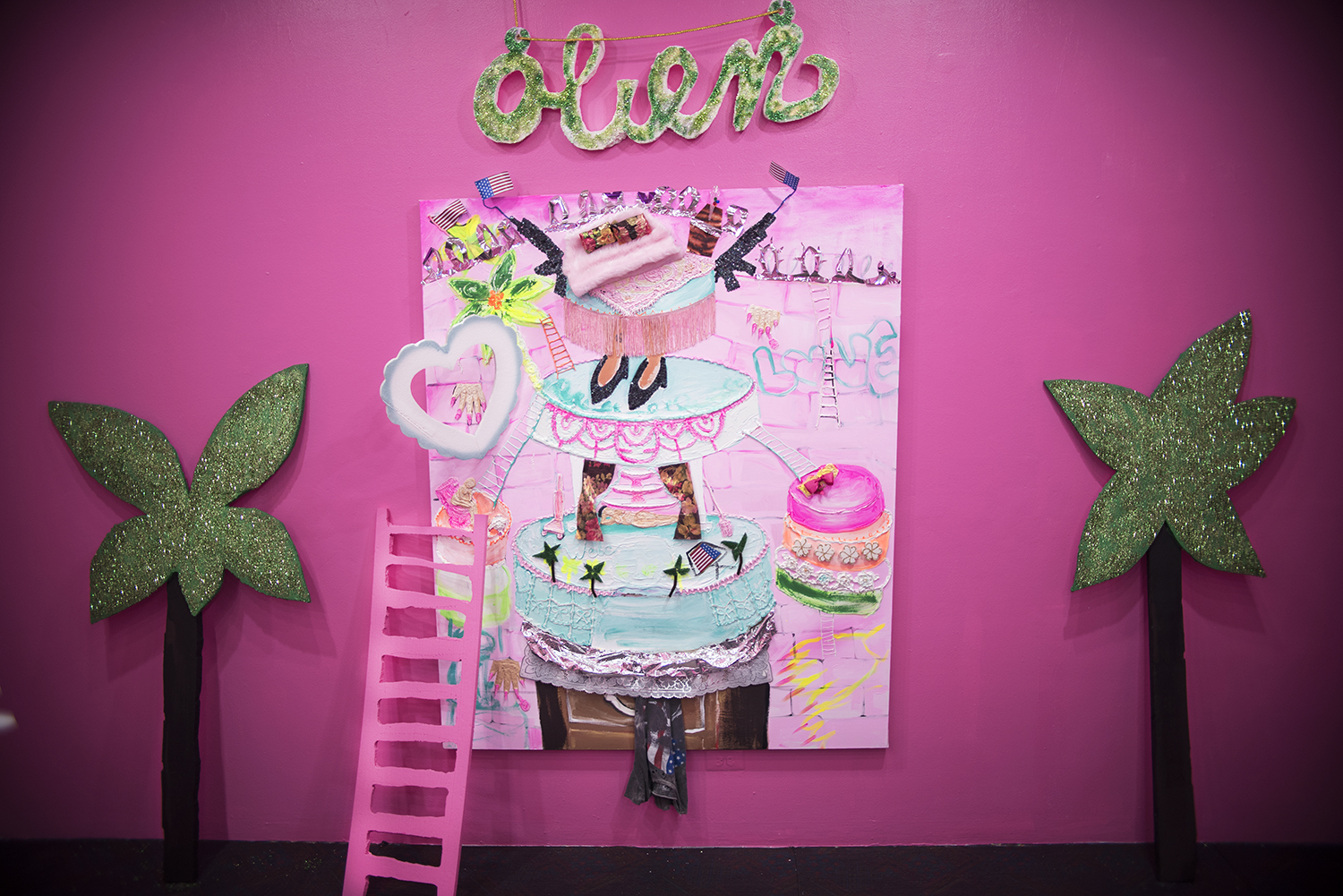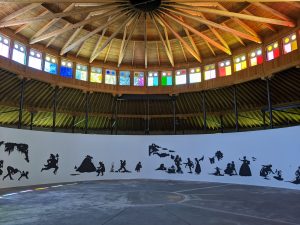Hot pinks and sugary detritus dominate the installations of Chicago-based artist Yvette Mayorga. In her most recent show, entitled The Politics of Desire and presented at the Chicago Artists Coalition, she uses a variety of mediums to comment on the inaccessibility of the American Dream for Mexican immigrants crossing borderlands. Her ongoing project, Borderland Series, communicates a narrative that encompasses the experiences of immigrant citizens from a variety of oppressed ethnicities. Through a wide array of media, ranging from acrylic painting to found objects, The Politics of Desire invites viewers to engage in a socio-political dialogue that would ordinarily be invisible in the white walls of a gallery space.
Within the excessive layering of frosting and found objects, Mayorga presents a bold critique of American capitalism, state-sanctioned violence, and the uncertainty of Mexican citizenship. By using strategies that actively silence the white American male gaze, her work overwhelms the viewer with signifiers that represent immigrant rituals of celebration.
Mayorga’s art practice originally began as an artistic venture to re-contextualize the board game Candy Land as a platform to critique the politics of the U.S/Mexico Border. Mayorga said, “I realized art was a platform for social activism when I began to tell my family’s story of immigrating to the United States, along with viewing the work of Pepon Osorio for the first time, I realized that the home is political.”
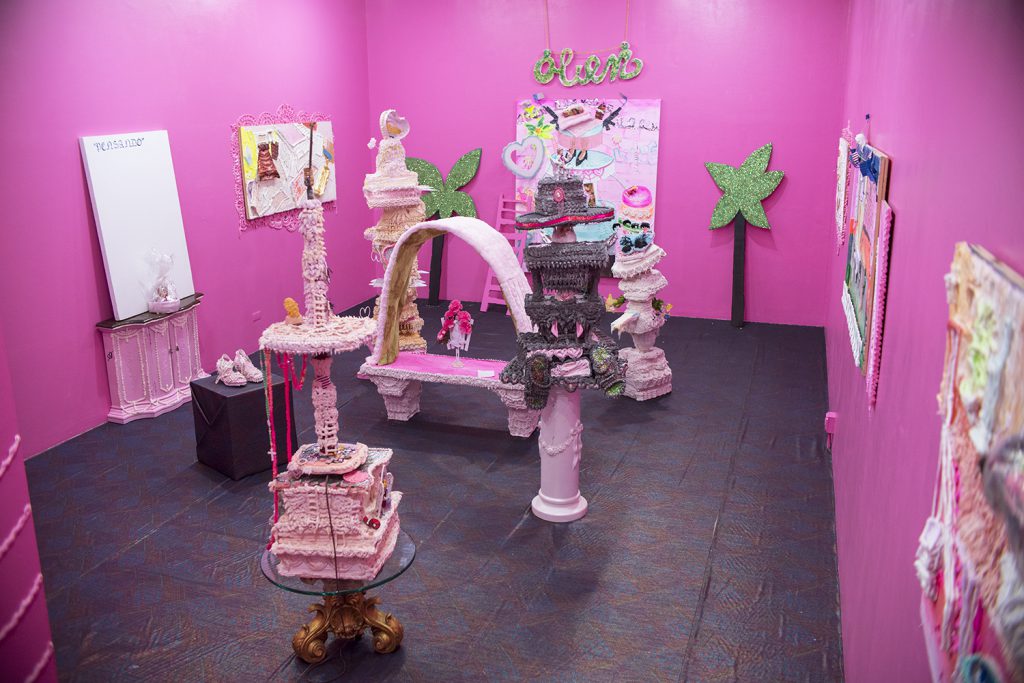
Through her current BOLT residency, her artistic practice has blossomed into sculptural canvases representative of domestic spaces pulled from childhood memory and America’s collective unconscious. Mayorga stated, “Now my work is open, honest, and aggressive in the ways that I am tackling, head on, the difficult issues of immigration alongside my family’s traumatic history of immigrating here. I now have found my voice in my work, and being able to tell the story of my dad’s labor and crossing has been fundamental to creating work that is honest.”
At first glance, towers of tiered cake frosting, hearts, and plastic children’s toys construct a youthful utopic experience that is on the fringe of fantasy. Endless stacks of cake rise above the viewer, engulfing the readymade objects of Barbie shoes and soft stuffed animals. This aesthetic of boundless, festive ornamentation spans across Mayorga’s oeuvre in the many forms that it takes.
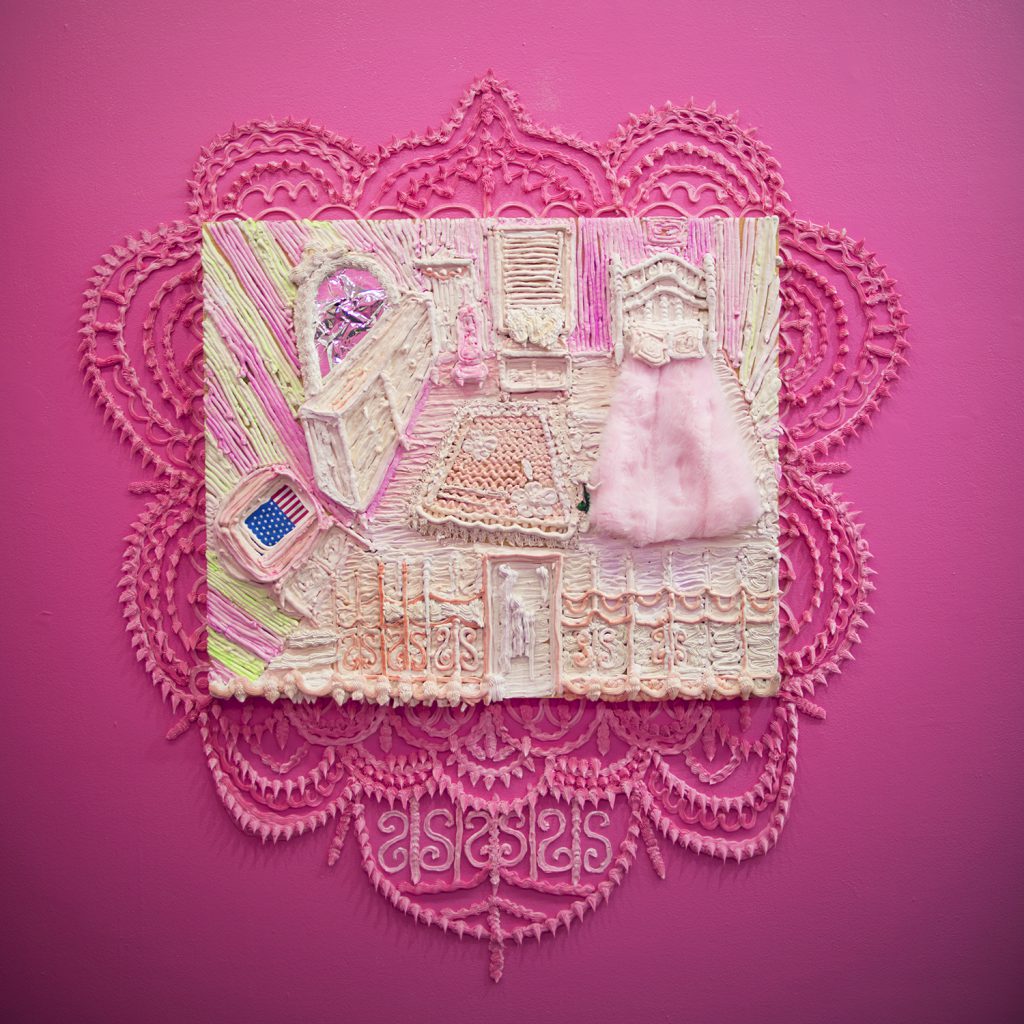
Bedroom after 15th Birthday I, for example, uses intricate layers of cake decorations to cover the surface of a wooden canvas. As opposed to frosting’s practical use as a savory embellishment, Mayorga uses the technique of cake piping as her paint brush. Her astute craftsmanship through this medium has the effect of simulating the patterns and designs frequently found on birthday cakes. Tight coils of pastel pinks, greens, and peaches ooze into each other to create an image that embodies the innocence of little girl’s bedroom. The collaging technique that Mayorga uses, in addition to piping, allows her compositions to visually pop from the flat surfaces they rest upon.
While dreamlike in their orientation, the distorted perspective of these pieces places the viewer at an angle that domineeringly looks into the privacy of an enclosed private space. The viewer suddenly begins to feel like an intruder—and it is this sense of intrusion that underlies the deceivingly paradisiacal landscapes Mayorga creates. By overwhelming the viewer with candy, sweets, and the perceived safety of the home, she deconstructs the idyllic notion of the American dream. The comforts of a house, a white picket fence, and a wholesome family together under one roof are compromised through covert signifiers of violence and home invasion.
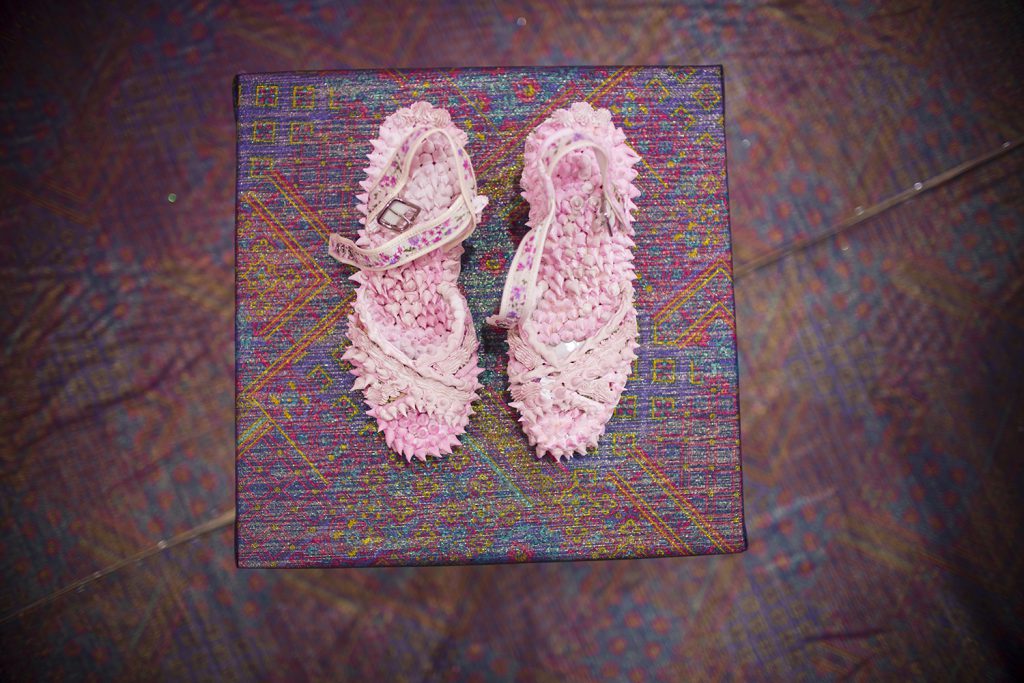
These signifiers of access, violence, and the military all allude to the paradoxes of the American Dream. The consistent tropes that make appearances in The Politics of Desire—ladders, bricks, hands, and feet—all represent a yearning for access to a better life. Mayorga’s tactic of hiding structures suggestive of America’s harsh treatment of immigrants on American soil makes a courageous statement. It comments on how the privileges of American life appear to be attainable to all, but are deceivingly out of reach for many.
With immigration policies particularly in flux during the post-Obama era Americans reside in today, Politics of Desire offers an important story. Mayorga reveals, “I have been grappling with these politically-infused issues for years. I think it’s made my work ever so timely, but it’s something that has driven my work since the beginning. Politics of today have created even more of an urgency within me and my work.”
Featured Image: Yvette Mayorga, “Three Tiers of Heaven, Stairway to Heaven,” 2017, acrylic, textile, tinfoil, American flags, tinfoil, paste, sequins, AstroTurf, foam, glass on canvas, 5ft x 4ft
 Sabrina Greig is an art critic in Chicago, originally hailing from New York City. She received her MA in Art History from the School of the Art Institute of Chicago with a focus on representations of the Black diaspora in pop culture, fine art, and gentrified urban spaces. Sabrina is a current curatorial fellow at ACRE projects located in Pilsen and has curated shows at the Haitian American Museum of Chicago as well as the School of the Art Institute of Chicago. Her literary work has been published in Fnewsmagazine and Bad at Sports. For more, visit her website.
Sabrina Greig is an art critic in Chicago, originally hailing from New York City. She received her MA in Art History from the School of the Art Institute of Chicago with a focus on representations of the Black diaspora in pop culture, fine art, and gentrified urban spaces. Sabrina is a current curatorial fellow at ACRE projects located in Pilsen and has curated shows at the Haitian American Museum of Chicago as well as the School of the Art Institute of Chicago. Her literary work has been published in Fnewsmagazine and Bad at Sports. For more, visit her website.
